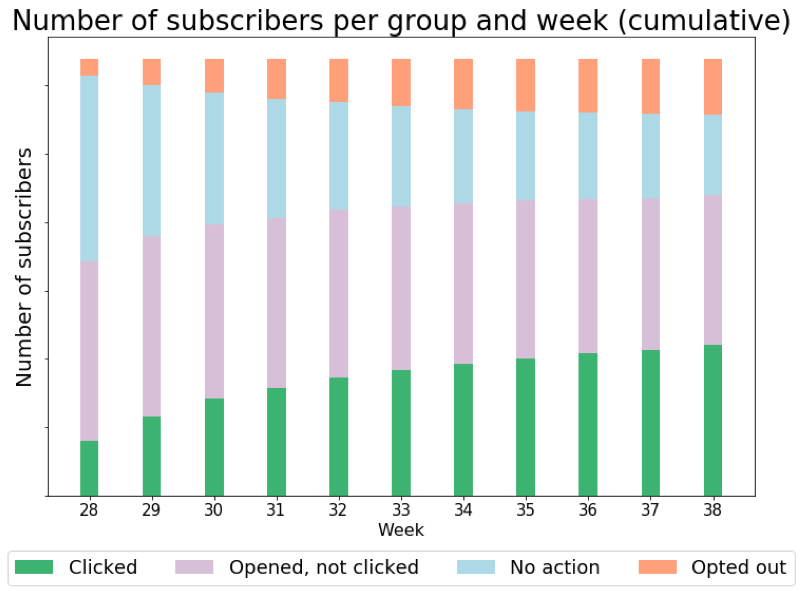Last week Jasmien Lismont, Project Manager and Data Scientist at Twipe, presented the first insights from the “JAMES, your digital butler” project at ConTech in London. In the year since it was announced as a recipient of Google DNI funding, we’ve heard a lot of interest in the industry about our collaborative project with The Times & The Sunday Times so we’re sharing a peek at some of the findings discussed at ConTech — further insights will be shared in Q2 2019.
Enabling hyper-personalisation via a digital butler
In short, JAMES enables personalised distribution of digital editions to help accelerate digital growth. He transforms conversion and engagement strategies by moving from segmented to highly individualised interactions with readers.
Using machine learning and artificial intelligence, JAMES gradually gets to know the habits, interests, and preferences of readers. He then exposes readers to relevant content in editions in their preferred formats, channels, times, and frequencies. This helps to increase reader satisfaction and engagement, in turn accelerating subscription growth and reducing churn of existing subscribers.
JAMES will provide subscribers with tailored experiences, using entirely new creative content formats, resulting in higher satisfaction and increased product engagement.
The actual content in each edition from The Times & The Sunday Times is constant, and is not personalised by JAMES. What is different for each reader however is how they reach the edition, whatever the trigger may be.

The team working on JAMES from Twipe and The Times & The Sunday Times
Fast experimentation with daily feedback
The teams working on JAMES from The Times & The Sunday Times and Twipe are spread over four countries (Belgium, the UK, India and Spain). What stands out in this project is the iterative approach to algorithm development they are using. This approach is applied to experiments with personalisation for newsletters, based on four dimensions:
- Time: finding the best time to send the e-mail for the individual reader
- Content: discovering which articles work best to draw readers to the edition
- Format: testing different layouts, framing, and designs
- Frequency: experimenting with the most effective number of e-mails per time period
More than 6 million personalised mails have been sent over 16 experiments, reaching roughly 60,000 subscribers.
The team behind JAMES follows the results of each experiment closely with daily dashboard checks, and every few weeks a more elaborate analysis is done with statistical analyses, including monthly comparisons against the baseline. Then in the next iteration, algorithms that are performing poorly are cancelled, while well-performing algorithms are maintained, or even further enhanced by combining newly gained insights from the data analyses.
With fast algorithm development, it is essential to have a daily follow-up of some key metrics, such as number of sends, which can quickly show if everything is technically going well. Opt-outs is also an important metric, helping to highlight any issues.
Still early, but very encouraging results so far
While it is still early in the project, the first results show that JAMES is able to increase activation of digital readers and as it learns, more subscribers are opening and clicking on the newsletters.

At ConTech, Jasmien presented learnings from the first half of the project, further insights will be shared in Q2 2019.
And in the other room is the session on appraising the opportunity for automated content creation + distribution starting with Jasmein Lismont from the brill @TwipeMobile on the “JAMES, your digital butler” collab with @thetimes + @thesundaytimes 💡👌🏻 pic.twitter.com/NjzudYWlOM
— ConTech (@ConTechLive) November 30, 2018
She identifies six lessons which stand out for other publishers working on collaboration and personalisation projects:
- Focus is key for collaboration
- Establish a baseline across experiments
- Fast experimentation allows for fast results and insights
- Not every subscriber reacts similarly → need to learn their preferences
- News and trends change rapidly → increased difficulty to recommend personalised content
- Don’t underestimate technical complexity of e-mail sending infrastructure
We look forward to sharing more insights and results from this project in 2019, in the meantime if you have any questions or comments please do not hesitate to contact us.
This article was written by Mary-Katharine Phillips, Media Innovation Analyst at Twipe from 2017 – 2021.
